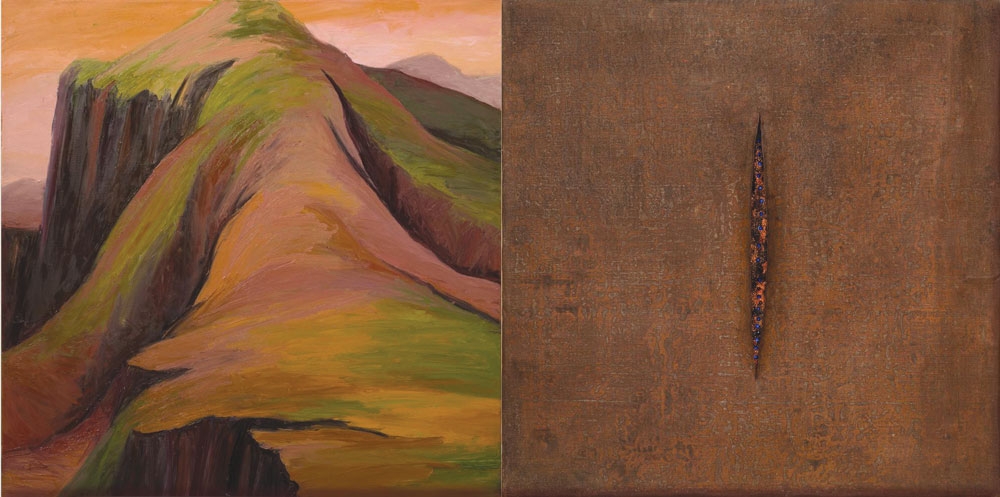Kay WalkingStick honors her Native American roots each time she strokes paint across a canvas.
A major exhibit of WalkingStick’s work will be held at the Kalamazoo Institute of Art beginning on June 14 with a Community Welcome that is free and open to the public.
Belinda Tate, executive director of the KIA, said even though WalkingStick is of Cherokee heritage, she also borrows stories, patterns and traditions from other Native American cultures to create her “incredibly rich” art.
“It’s a unique opportunity to see important contributions made to the realm of contemporary art by artists of Native American heritage,” Tate said. “This show is somewhat revisionist in that way because she has had a very long and fruitful career and is a well-known artist.She has worked in many different aesthetic styles. She’s done some beautiful abstractions. Many were inspired by historic encounters and others are more overtly related to Native American cultures.”
WalkingStick has become best known for the abstract/landscape diptychs, two-paneled works of art, she began making in 1985. She typically makes an abstract work on one panel and a representational or realistic image on the other, such as landscapes of the Rocky Mountains, the Alps and ancient southwestern sites.
Tate said the KIA always seeks out exhibitions that offer a high level of community engagement and a substantial amount of educational value.
“We use these exhibitions to educate the public about aesthetic movements, arts or culture they may not be familiar with,” Tate said.
WalkingStick said her diptychs are an especially powerful metaphor to express the beauty and power of uniting the disparate, and this makes it particularly attractive to people like her who are biracial. WalkingStick’s mother was of Scottish-Irish origin and her father was a member of the Cherokee nation.
“I do not see my paintings as landscapes, per se, but rather as paintings that describe two kinds of perceptions of the earth,” WalkingStick said in a press release. “One view is visual and fleeting and the other is abstract and everlasting. These paintings are my attempt to express the mythically inexpressible and to unify the present with eternity.”
Although the KIA has several pieces in its collection by Native American artists and has shown the work of these artists in the past, Tate said it has never been of the magnitude of the WalkingStick exhibit. She said it’s rare for the KIA to do a show that takes up all four of its upper galleries and rarer still to be able to do it for a woman and Native American artist.
WalkingStick’s work warrants a large investment of the time to mount the exhibit and the space to showcase her talent, Tate said.
The exhibit will feature 65 of WalkingStick’s most notable paintings, drawings, small sculptures, notebooks, and the diptychs for which she is best known. The exhibition traces her career over more than four decades and culminates with her recent paintings of monumental landscapes and Native places.
“Outside of her Native American heritage, she’s just a very important landscape painter. She brings a certain talent, beauty and grace to her work,” Tate said. “Here’s a woman who’s a gift to our nation and has so much to offer to the art world. Her Native American heritage is an additional bonus that we get.”
Tate said visitors to the exhibit should come with an open mind and be prepared to learn something new. She said they will transported on a journey through more than four decades of WalkingStick’s work, showing her changing artistic styles.
“Our mission is to really use the show as a way to bring our community members together and engage them in meaningful conversation about art and culture and the Native American heritage that exists in our community, and to facilitate meaningful conversation that extends beyond art,” Tate said.
Kay WalkingStick
Kalamazoo Institute
of Arts
314 S. Park St., Kalamazoo
June 17-Sept. 10
kiarts.org, (269) 349-7775





